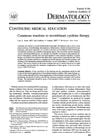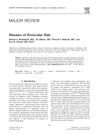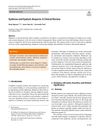Lepromatous Leprosy in a Renal Transplant Recipient
January 1998
in “
Clinical Infectious Diseases
”
TLDR A kidney transplant patient developed leprosy, likely due to immunosuppression and genetic factors, and improved with treatment.
This document reported a unique case of lepromatous leprosy in a 25-year-old renal transplant recipient in New Orleans, marking the first known instance of new-onset leprosy in such a patient. The patient developed multiple nodular skin lesions and experienced hair loss, including eyebrows and eyelashes. Despite no direct contact with leprous individuals or armadillos, the patient might have been exposed to Mycobacterium leprae through soil while gardening in Baton Rouge, where armadillos are common. The patient's immunosuppressive regimen and genetic predisposition, including HLA-DR2 and HLA-DQ1 alleles, likely contributed to the development of lepromatous leprosy. The case highlighted the importance of considering leprosy in the differential diagnosis of unusual skin lesions in immunocompromised individuals. Treatment with a modified regimen for multibacillary disease led to improvement in symptoms.




